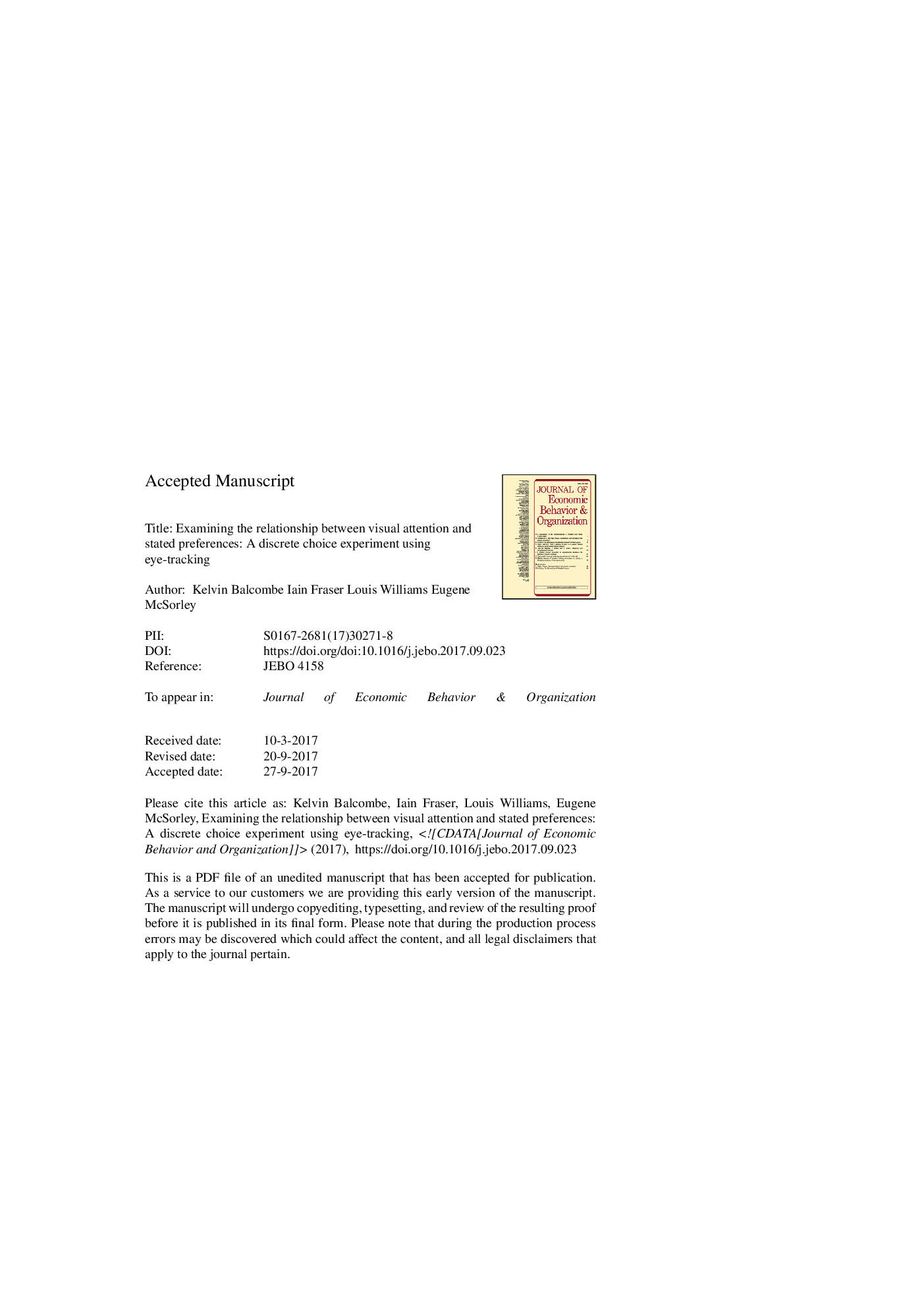| Article ID | Journal | Published Year | Pages | File Type |
|---|---|---|---|---|
| 7242729 | Journal of Economic Behavior & Organization | 2017 | 42 Pages |
Abstract
We examine the relationship between visual attention and stated preferences derived from a discrete choice experiment. Focussing on consumer preferences regarding country of origin food labels, we employ a Bayesian infinite mixture Logit to derive results that reveal patterns of respondent heterogeneity that would not be captured assuming that random parameters take a specific distributional form. Our results reveal weak relationships between the eye-tracking data, our stated preference results and various attribute use questions. Although respondents with higher levels of visual attendance value specific attributes more highly, the strength of the relationship is fairly weak. Therefore, whilst we maintain that eye-tracking is useful, we argue that there needs to be greater clarity about the aims and purpose of using eye-tracking in stated preference research.
Related Topics
Social Sciences and Humanities
Economics, Econometrics and Finance
Economics and Econometrics
Authors
Kelvin Balcombe, Iain Fraser, Louis Williams, Eugene McSorley,
